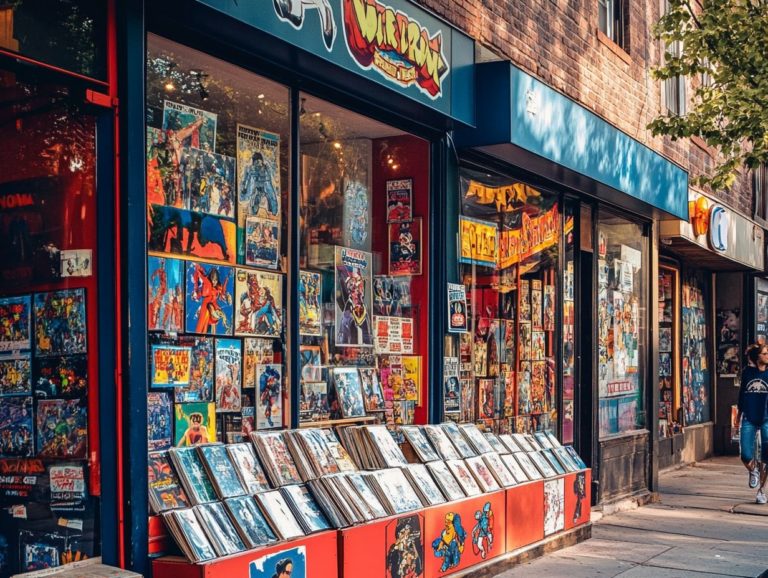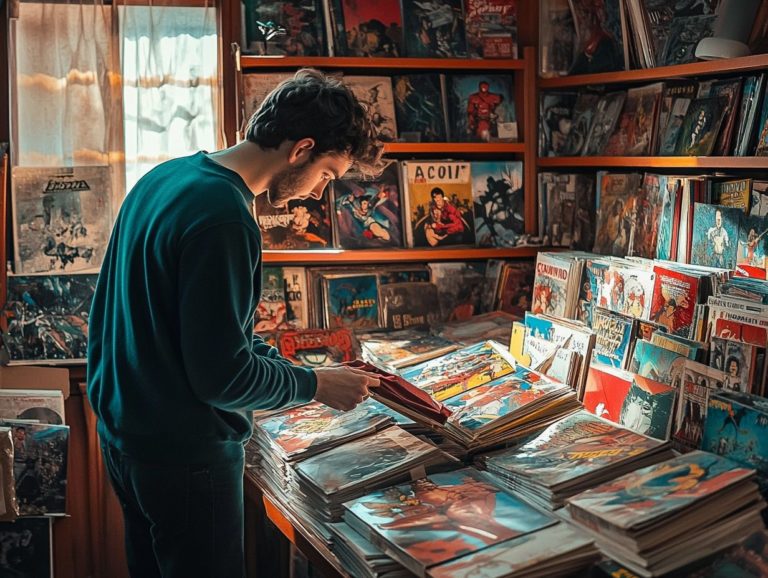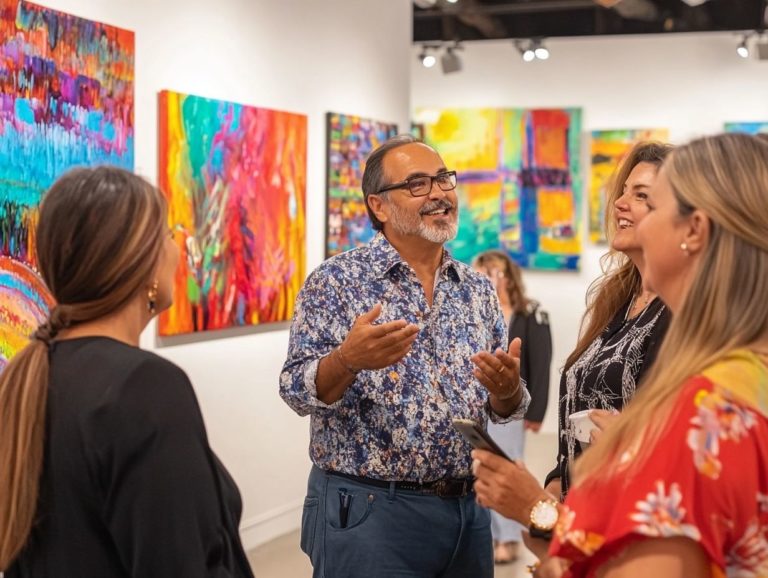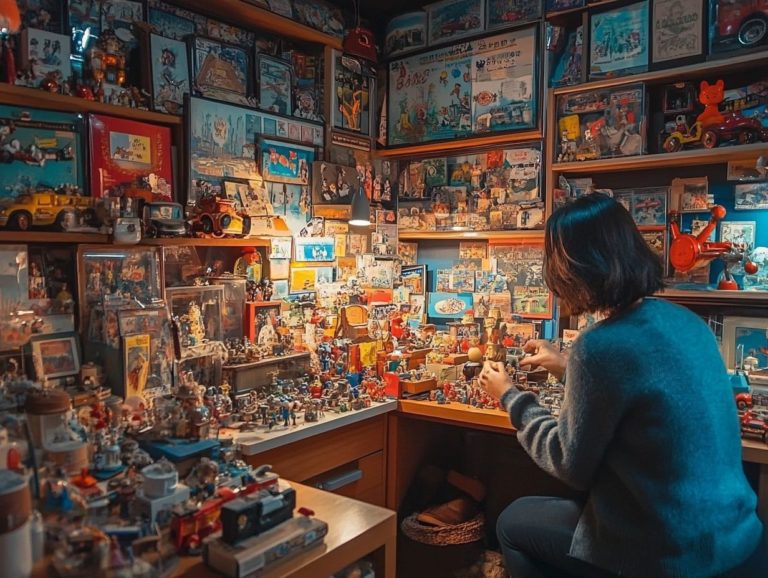Exploring the World of Fine Art Collecting
Fine art collecting is more than just buying; it s an exciting adventure in creativity and culture. It invites you on a journey filled with creativity, investment, and personal expression.
As you explore the values of art, you ll discover a variety of mediums, from captivating paintings to stunning sculptures. This article serves as your guide through the enchanting world of fine art.
Whether you re a seasoned collector or just starting out, you ll find valuable tips for building, maintaining, and protecting your collection while navigating the ever-evolving fine art market.
Contents
- Key Takeaways:
- What is Fine Art Collecting?
- Why Collect Fine Art?
- Types of Fine Art
- Paintings, Sculptures, and Other Mediums
- Building a Fine Art Collection
- Tips for Finding and Evaluating Pieces
- Maintaining and Protecting Your Collection
- The Fine Art Market
- Frequently Asked Questions
- How do I begin exploring the world of fine art collecting?
- What are some important things to consider when choosing a piece of fine art to collect?
- How can I ensure that the fine art I collect is authentic?
- Do I need a large budget to start collecting fine art?
- How do I ensure the safety and preservation of the fine art I collect?
- What resources can help me explore fine art collecting?
Key Takeaways:
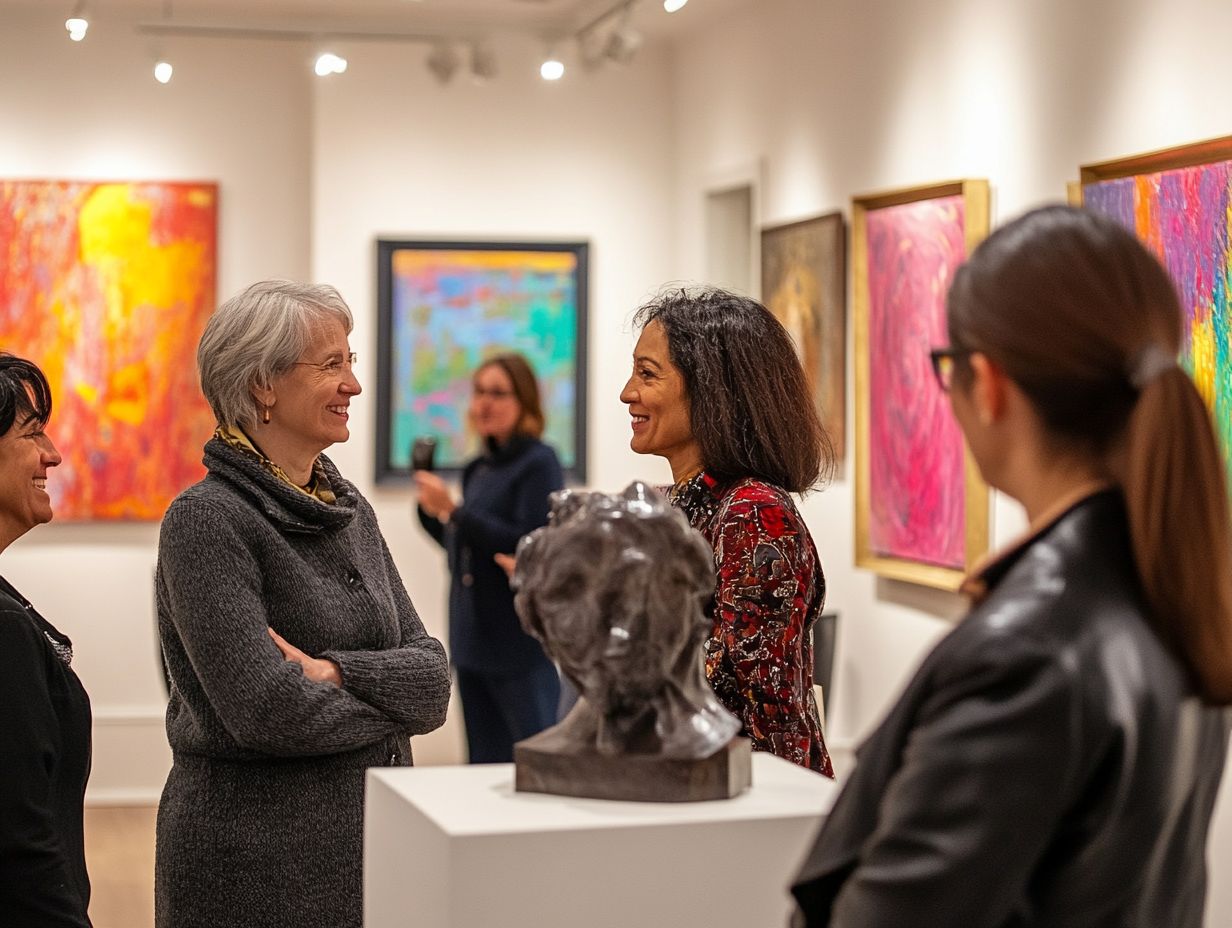
Fine art collecting involves acquiring and managing valuable pieces of art, including paintings, sculptures, and other forms. It can provide both intrinsic value, such as aesthetic enjoyment, and extrinsic value, like potential financial gain.
To build a successful fine art collection, evaluate pieces carefully and take steps to preserve and protect your collection for the future.
What is Fine Art Collecting?
Fine art collecting is a distinguished pursuit that immerses you in a world filled with diverse practices, motivations, and personal connections to original artworks. To navigate this vibrant landscape, consider exploring understanding the art market.
This intricate realm thrives on your passion as a collector, allowing you to explore contemporary art and the rich tapestry of art history. You seek not just aesthetic pleasure but also investment opportunities that can arise from your collection.
This journey involves understanding art trends and appreciating the creativity of emerging artists while navigating the complexities of the art market.
Collecting fine art becomes a lifelong commitment to appreciating and preserving artistic expression.
Why Collect Fine Art?
Collecting fine art offers both personal joy and investment potential, transforming it into a thrilling journey for art lovers and investors alike.
You engage with art on a personal level, forging a connection to creativity as you appreciate craftsmanship and the emotional resonance in each piece.
Fine art is also a tangible investment, often appreciating in value over time, especially in a dynamic market.
This duality enriches your life and elevates your understanding of art history and trends, making each acquisition a step toward deeper appreciation and insight.
Intrinsic and Extrinsic Value
Intrinsic value refers to the personal joy and beauty you find in fine art. In contrast, extrinsic value pertains to its market worth and investment potential.
As a collector, you navigate this fascinating difference, balancing your passion for art with strategic considerations of investing in trending pieces. Grasping both values is essential for making savvy art purchasing decisions.
Many collectors derive profound personal fulfillment from their collections, as each artwork tells a unique story or evokes powerful memories, transcending mere monetary worth. This intrinsic joy can beautifully coexist with the pursuit of extrinsic benefits.
Collectors, like Noah Horowitz, suggest that understanding the shifting landscape can greatly influence the future value of your pieces.
Consider a vintage work by a now-famous artist. It might resonate deeply with you while also appreciating significantly over time. Thus, the interplay between emotional connection and financial appreciation transforms the art world into both a fulfilling passion and a strategic opportunity for savvy collectors.
Types of Fine Art
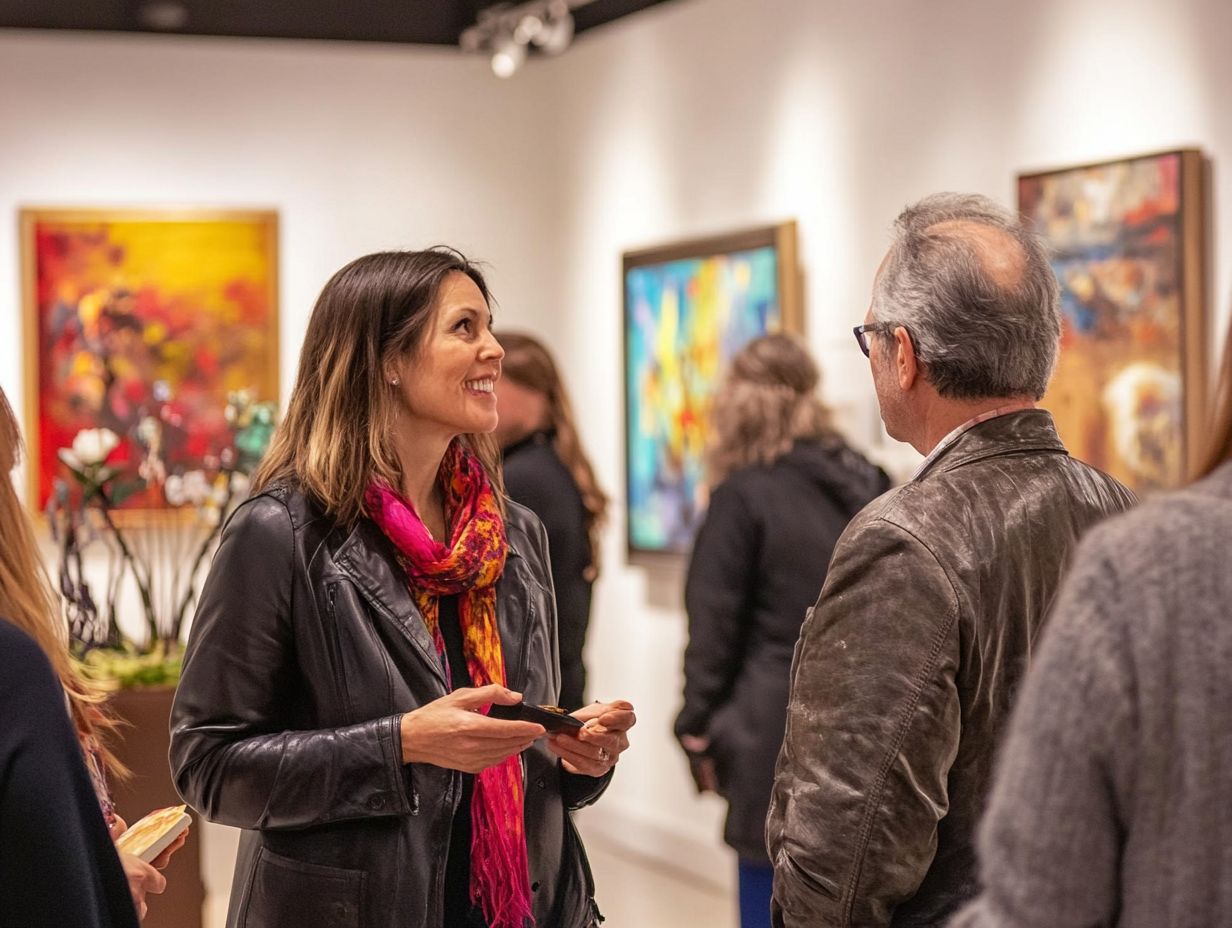
The realm of fine art presents an exquisite array of mediums, including paintings, sculptures, and various forms of contemporary art, each offering distinctive opportunities for discerning collectors.
From timeless oil paintings to cutting-edge installations, the art world is a treasure trove of original works that resonate across cultures and historical periods.
Limited editions, in particular, hold a special allure in the contemporary art market. Staying informed about current trends is essential to refine and elevate your collection with precision.
Start your fine art journey today and discover the joy of collecting!
Paintings, Sculptures, and Other Mediums
Paintings and sculptures are undeniably among the most esteemed mediums in fine art, but the landscape is much broader, incorporating digital art and installations as well. Each medium carries its unique aesthetic and investment considerations, requiring you to navigate the world of original and limited edition artworks.
The contemporary art scene, marked by its constant innovation and evolution, continually reshapes your interests and strategies as a collector. Grasping the distinct characteristics of each art medium is crucial as you aim to build a diverse portfolio.
For example, digital art often merges technology with creativity, drawing in those captivated by modern advancements, while installations provide immersive experiences that resonate on a deeply personal level.
As you evaluate potential pieces, pay close attention to provenance (the history of ownership of a piece of art), the artist’s reputation, and rarity, as these elements greatly affect prices. Staying informed about market trends and the artist s trajectory can offer valuable insights into future valuations, giving you the power to make informed decisions that enhance your investment.
Building a Fine Art Collection
Building a fine art collection demands careful planning, strategic purchasing, and a genuine appreciation for the art itself. As an aspiring art collector, you’ll want to immerse yourself in thorough research visiting galleries and having insightful discussions with art consultants will deepen your understanding of the nuances involved in today s dynamic market.
Use effective collecting tips and strategies to boost the quality and value of your collection today! Ensuring it beautifully reflects your personal taste while also holding strong investment potential.
Tips for Finding and Evaluating Pieces
Finding and evaluating pieces of art is essential for you as a collector aiming to curate a meaningful collection that reflects your aesthetic and investment goals. Successful collectors often adopt a multifaceted approach visiting galleries, attending art fairs, and consulting with experienced art advisors to assess the quality and authenticity of potential purchases.
It s crucial to delve into understanding the provenance of artworks, as a piece s history can significantly impact both its value and relevance. This involves tracing its previous ownership, exhibition history, and auction results, all of which provide context and confidence in your investment. Analyzing pricing methodology will help you determine whether a piece is fairly priced amidst market fluctuations.
Building a strong network within the art community allows you to gain access to exclusive pieces and valuable insights. Connecting with artists, fellow collectors, and gallery owners can offer firsthand knowledge about upcoming trends and hidden gems, enhancing your overall curation experience.
Maintaining and Protecting Your Collection
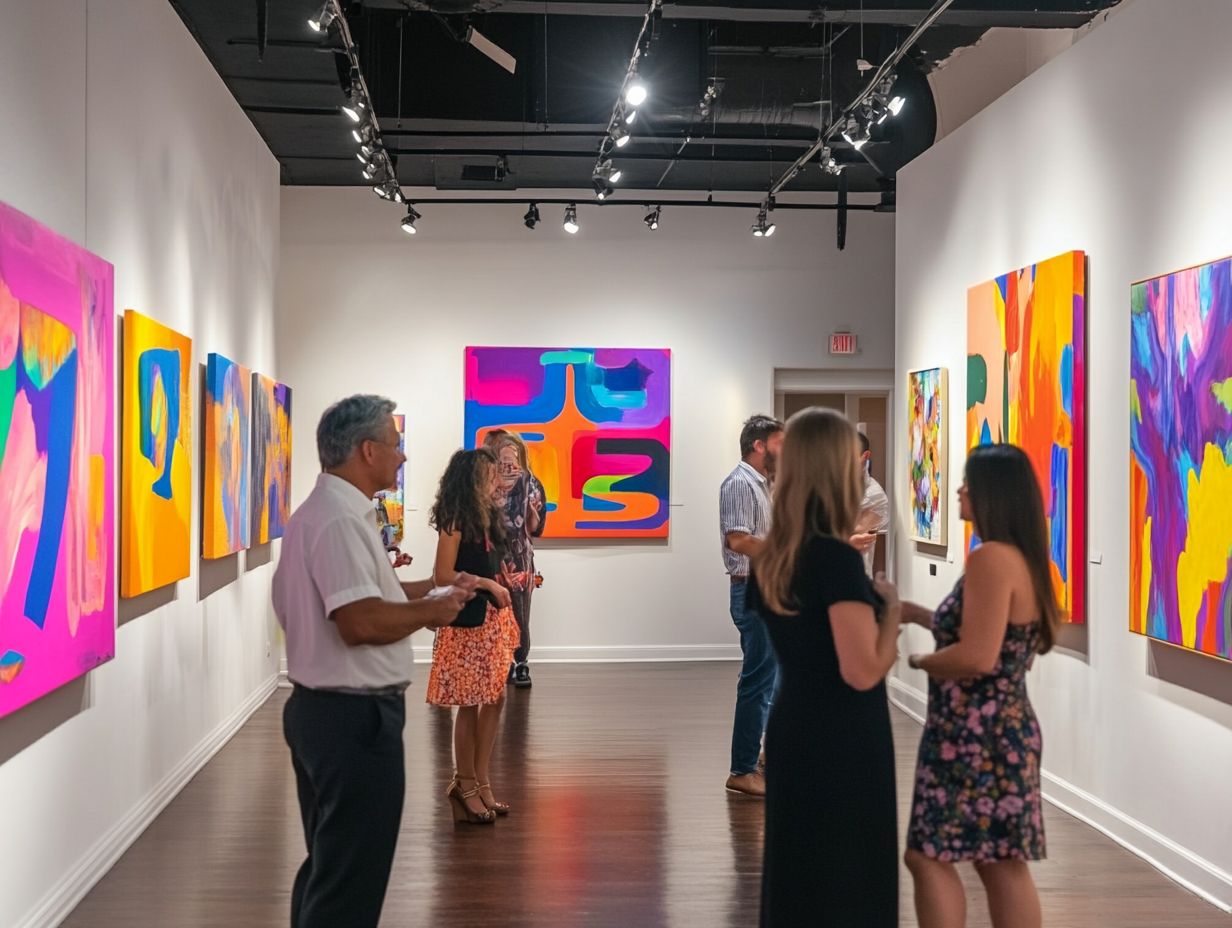
Maintaining and protecting your fine art collection is essential for ensuring its longevity and intrinsic value over time.
As a collector, it is imperative to adopt specific practices that preserve your artworks, such as implementing climate control measures and employing proper display techniques. Securing insurance is essential to protect your artworks from damage.
By grasping the significance of preservation and insurance, you can adeptly navigate the complexities of maintaining a robust and valuable art collection.
Start researching today and connect with fellow collectors!
Discover the best practices for maintaining your art collection.
Preservation and Insurance
Art preservation and insurance are essential for maintaining the integrity and value of your collection. Ensuring that each piece remains in peak condition is crucial for you as a collector.
Be proactive in grasping preservation techniques tailored to various mediums. Also, dive into insurance options that cover potential damages.
These measures protect your investment and demonstrate a profound appreciation for the significance of the artworks you cherish.
Understanding the unique requirements of mediums like oil paintings, sculptures, and digital art is paramount. Each medium demands specific preservation methods to prevent deterioration.
For instance, oil paintings thrive in stable humidity and temperature. This might prompt you to consider investing in climate-controlled environments.
Consulting with professional conservators can provide invaluable insights into best practices for handling, cleaning, and restoration.
Make sure to get comprehensive insurance coverage. It s your safety net against unexpected events like theft, fire, or natural disasters, allowing you to feel secure in your investments.
These thoughtful strategies reflect your commitment to art and its enduring legacy.
The Fine Art Market
The fine art market represents a dynamic and intricate ecosystem shaped by art trends, lucrative investment opportunities, and diverse pricing methodologies.
As a collector, navigating this landscape with finesse is essential to make informed purchasing decisions. Whether attending esteemed art fairs or exploring online platforms, understanding the market’s nuances empowers you to recognize valuable pieces, making insights like the art of collecting invaluable.
You can strategically curate your investment art portfolio with confidence by staying informed.
Understanding Trends and Investing Wisely
Understanding art trends is crucial for collectors looking to invest wisely in the fine art market. These trends can greatly impact the value of artworks over time.
By keeping informed about emerging artists and popular movements, you can strategically position your investments for potential growth areas within the market.
Consider the rise of street art, where artists like Banksy transformed their works from graffiti into highly coveted pieces. This has resulted in remarkable value increases.
The growing demand for sustainable art has also led you to explore eco-conscious artists. This highlights the significance of thorough research in evaluating changing preferences.
By continuously analyzing these trends, you can enhance your portfolio and make informed choices aligned with future market developments.
Frequently Asked Questions
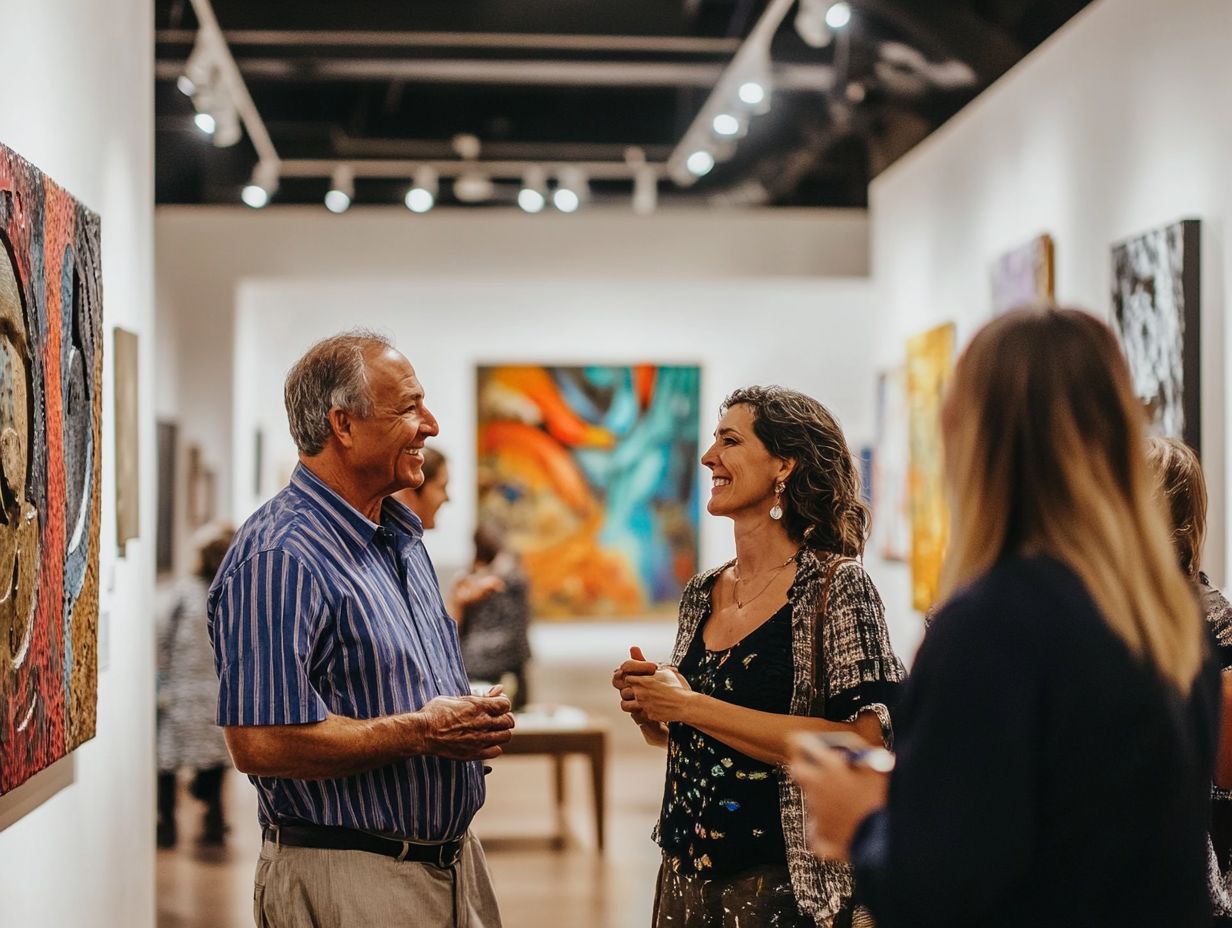
How do I begin exploring the world of fine art collecting?
To begin exploring fine art collecting, start by researching different art forms, artists, and galleries. Attend art fairs, shows, and auctions to understand the market and the art market trends for collectors that interest you.
Consulting with experienced collectors or art consultants for advice and guidance is also helpful.
What are some important things to consider when choosing a piece of fine art to collect?
When choosing a piece of fine art to collect, consider the artist’s reputation and track record. Assess the condition and authenticity of the piece, along with its potential for appreciation in value.
Remember to buy what you love and what speaks to you, as you’ll likely be living with the art for a long time.
How can I ensure that the fine art I collect is authentic?
To ensure the authenticity of your fine art, research the artist and their work thoroughly. Look for certificates of authenticity or provenance, which document the art’s origin and history.
Working with reputable galleries and dealers can provide expert opinions and authentication services.
Do I need a large budget to start collecting fine art?
No, you don’t necessarily need a large budget to start collecting fine art. While some pieces may be expensive, more affordable options are available, such as prints or works by emerging artists.
Set a budget and stick to it, remembering that the value of art goes beyond its price tag.
Start your collection today!
How do I ensure the safety and preservation of the fine art I collect?
To keep your fine art safe, handle, store, and display it carefully.
Avoid direct sunlight, extreme temperatures, and humidity. Insure your collection and create a plan to care for any needed restoration or repairs.
What resources can help me explore fine art collecting?
If you’re interested in fine art collecting, many resources can help.
Check out art magazines, books, online forums, and educational workshops. Attend lectures and events hosted by art organizations to connect with fellow enthusiasts.
Networking with experts can lead to valuable insights and opportunities.


